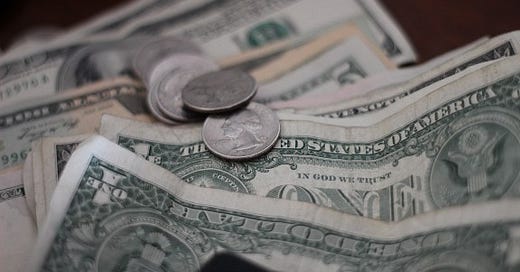Thrift Store Clothing Pricing Strategy
It's simply the most someone is willing to pay for an item.
Ok, simply might not be the best word but in many ways, it does boil down to that. The trick is finding a balance. A lot of thrift stores depend on rack pricing in clothing, pricing similar items all the same. For example, all men’s long sleeve dress shirts priced at $4.99. That does create uniformity and simplicity, good things.
The downside is that some percentage is overpriced and some underpriced. I have seen K-Mart brand shirts priced the same as near new Brooks Brothers shirts. You can guess which one I bought. As a shopper, I would have willingly paid double for the Brooks shirt but I wasn’t asked to.
Brands that are perceived as cheap are often just taking up space because they do not represent value to the customer. Those cheap basic brands can lower the overall perceived value of a department and store.
K Mart and Brooks Brothers shirts perform the same basic function, their perceived value is very different.
There are a couple of possible solutions that partly depend on available inventory. One is to raise the rack price and be pickier about what goes out for sale.
I did this at one store during a busy donation season. We didn’t put out any discount store private-label goods, they all went to an outlet store. We were on rack pricing with really good items up priced a couple of dollars. Our sell-through percent went up, rejected stale goods went down and sales went up.
Another method is to have varied prices, sell the low-value goods cheaper to appeal to the price only shopper. Then price the top quality goods higher. The trick is in having people sorting goods that can tell the difference. When possible this is best for the store and customer. The cheap items appeal to the price of only customer, the quality buyer will pay a little more for those name brands. There is always a mid-range buyer.
A hybrid is to have rack pricing, skip the cheap stuff, and price the best items, like my Brooks Brothers example, higher.
One last thought:
Unless there just isn’t enough merchandise available to keep a store full I suggest not merchandising the bottom of the line brands. If necessary, sell them cheaper so they represent a decent value to your customers. Thrift customers are always value shoppers, there are just differences in how they perceive value.
Thrift is business, we succeed when we treat it that way.
Thanks for reading!
I’m a thrift and retail business expert located near Chicago, helping small businesses grow and succeed. You can find me on LinkedIn, Medium, and my thrift reseller blog The Thrifter.
You might also be interested in my thrift Merchandising ebook on Amazon. It’s about how to merchandise thrift stores more like traditional stores. It’s free with a Kindle Unlimited membership.
Tim Gebauer





